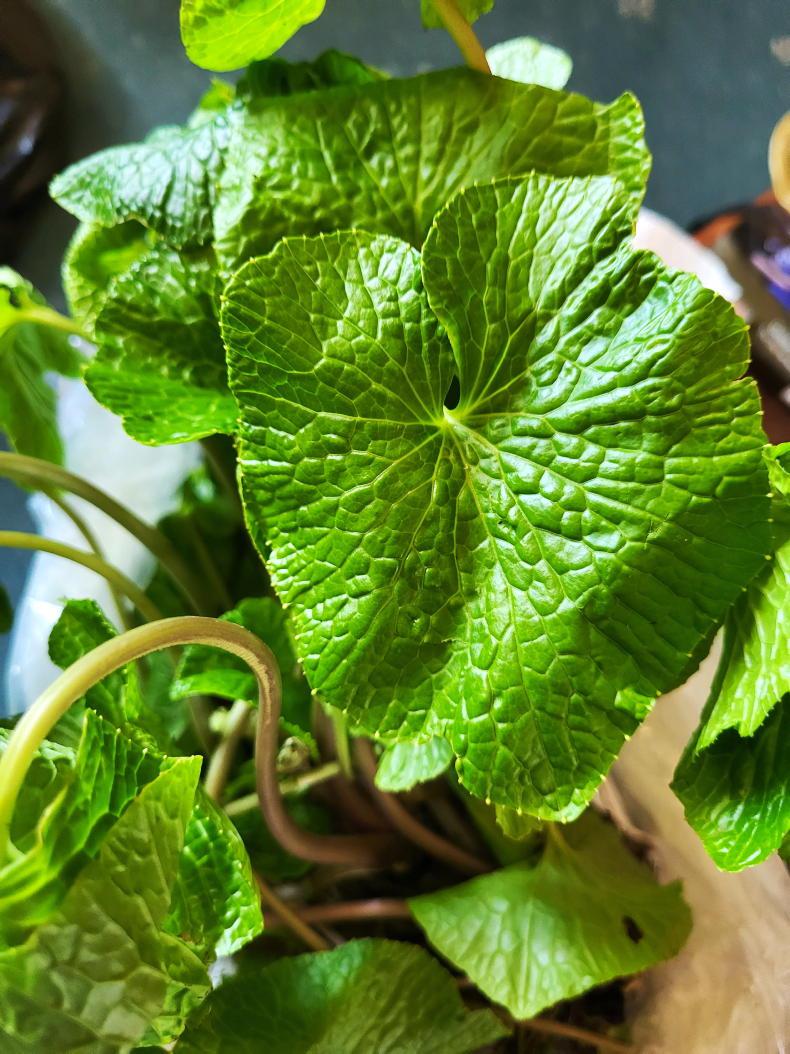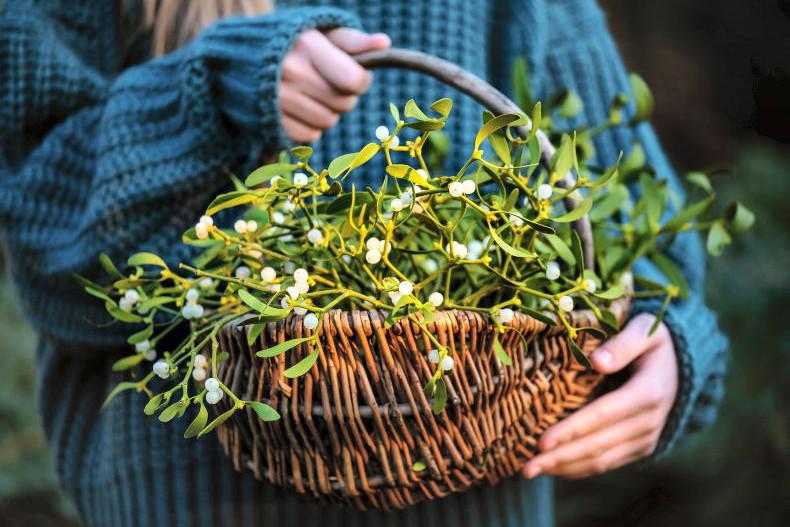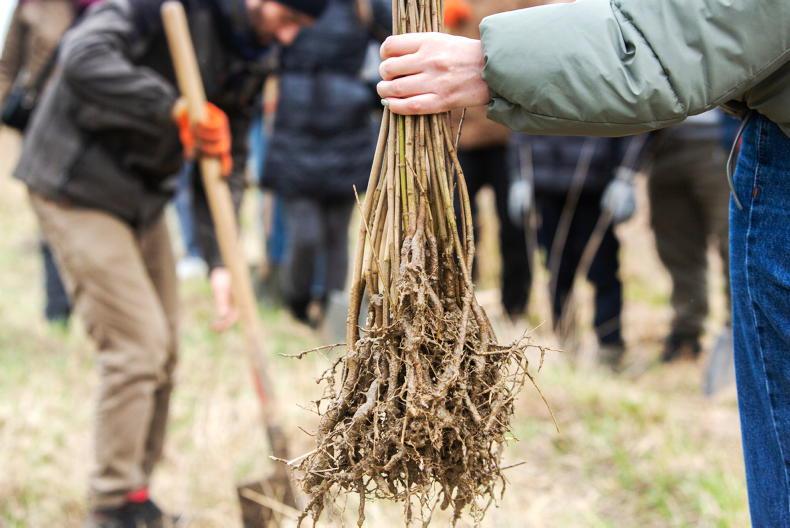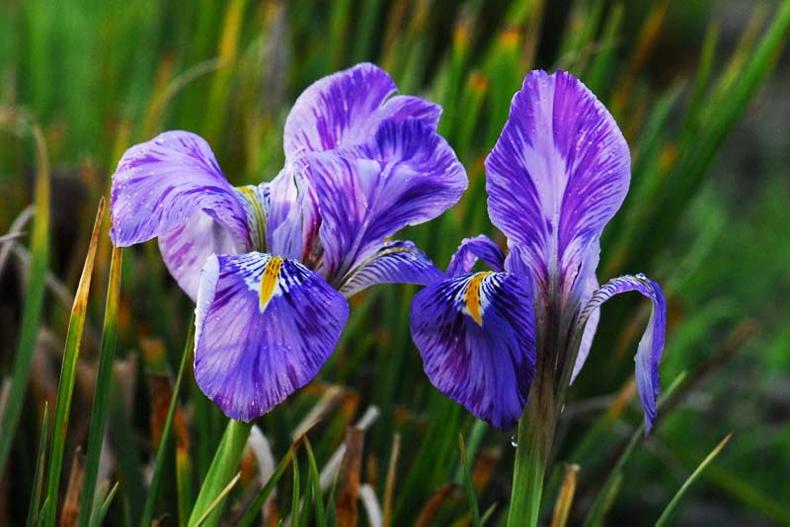Name: Like many good garden plants, this small tree has a few common names apart from ‘snowy mespilus’. In its native North America, it is variously known as June berry, service berry and shad bush as well. The June berry name refers to the small black berries that are produced in June from the spring flowers.
These are edible and sweet but not very tasty. However, they are often eaten by birds, especially blackbirds and thrushes which find them attractive. But this does not occur in all parts of the country, as though the birds in some areas have not cottoned on the fact that they are edible.
The name service berry comes from the edible fruit, making it a serviceable tree. The name mespilus really belongs to the medlar, which is related to this tree. These all are members of the rose family, allied to apples, pears, cherries and many other genera.
Botanical name: Amelanchier is the correct name, derived from the French name for a European species, but the North American species are the ones seen in gardens. There is really only one of these that is widely grown, Amelanchier lamarckii, from Canada and the east coast of the US.
This is sometimes called Amelanchier canadensis, which also exists but not as widely. Amelanchier lamarckii is taller and more tree-like than Amelanchier canadensis, which tends to make a lower, more bushy shrub, suckering much more profusely. This is an important point because the more suckering a plant is the more hassle it can create, having to get rid of suckers.
Garden value
Snowy mespilus is one of the most sparkling of spring shrubs, possessed of an exuberance that is only matched by its cousins, the flowering cherries. But this plant straddles the boundary between small tree and large shrub, which simply means it is versatile and a place can be found quite easily in any garden, but especially in a rural garden, because this plant is much the same as the wild species, an untamed, uncurbed plant of great beauty.
The ideal place for snowy mespil is on a rough bank or boundary to the garden where it could be planted as a large group of shrubs and allowed to grow unhindered. In this situation it does not matter if it suckers.
Its masses of pure-white flowers are great for a dramatic spring show. The whole bush erupts into flower with the coppery leaves following quickly as soon as the flowers open. While it only lasts a couple of weeks, the show of flowers has an exuberance, a joyous celebratory note that makes it very appealing. It is a plant that seems geared up for a quick transition from spring to summer, as happens in its native land when spring arrives within days of the snow melting. This tree is very hardy and can tolerate very extreme cold, so it is suitable for use in colder inland areas.
Growing amelanchier
During summer, the foliage is pretty but not remarkable. As autumn approaches, some leaves turn red and later the whole plant can take on stunning tones of red and yellow. It is one of the best shrubs or trees for autumn colour and this comes as a complete contrast to its spring show, but it is equally good and lasts longer.
Unlike many trees and shrubs that colour well and need acid soil, the amelanchier grows well on limy soil and colours almost as well. It likes the soil to be not too fertile, but moist and well-drained.
It can cope with drier conditions but tends to react by becoming somewhat stunted, which might not be a bad thing.

Wasabi.
Wasabi is also known as Japanese horseradish. This is an accurate name because this plant does originate in Japan and it is related to horseradish. Both of these plants are strongly pungent, but the Japanese variety is even more so. Even tiny amounts can cause an intense burning feeling in the nasal passages, and the effect can take some minutes to ease off, but it is not as long-lasting as chilli. Unlike horseradish, the leaves of which are not eaten, all parts of the wasabi plant can be eaten, making a pungent addition to a green salad. Although eaten in Japan for centuries, its arrival in the west has coincided with the increased popularity of Japanese sushi.
In its native Japan, wasabi grows naturally by the sides of mountain streams in quite moist soil and heavy shade. It has a look of shade-loving plants as it has broad, round leaves to capture available sunlight. Still, if planted in sunny conditions it is likely to fail. It is not completely hardy, and some clones are probably more resistant.
Although any part of the plant can be eaten, prepared by grating, the prized part is a rhizomatous stem which takes two or more years develop and looks like the stalk of a Brussels sprout plant with the belts removed. Indeed, it is a relative of Brussels sprouts, with both members of the cabbage family, also related to mustard. Wasabi can be grown from seeds, which follow white spring flowers and plantlets that arise on older stems.
Flowers
Hardy annual flowers such as calendula and candytuft can be sown and will flower in late summer. Gladiolus can be planted directly outdoors from the middle of the month. So too can lilies, which can also be potted up for summer flowers.
Fruit, vegetables and herbs
Take advantage of any chance to get in vegetable seeds and if the ground is right, most kinds can be sown now. Control weed seedlings between vegetables as soon as they come up. It is easier to get rid of them when they are small.
Lawns
Lawn feeding can begin, if not already done, particularly if the grass is yellow and thin. Old, thin lawns can be over-sown with some fresh seed on the patchy areas in damp weather. A good shower of heavy rain helps to wash down the seeds.
Greenhouse and house plants
Feed and water heavily all greenhouse plants, if not already done. Sow sweet corn and runner beans in the next two weeks for planting out at the end of May. There is still time to sow seeds of sweet peppers and chilli peppers.
Trees, shrubs and roses
This is the time for planting root-balled evergreens, as most kinds are coming into growth. Evergreens in pots usually do very well when planted as growth starts – they root straightaway. Water well until they are settled in.
Read more
In the garden with Gerry Daly: Lenten rose
In the Garden with Gerry Daly: Darwin’s barberry
Name: Like many good garden plants, this small tree has a few common names apart from ‘snowy mespilus’. In its native North America, it is variously known as June berry, service berry and shad bush as well. The June berry name refers to the small black berries that are produced in June from the spring flowers.
These are edible and sweet but not very tasty. However, they are often eaten by birds, especially blackbirds and thrushes which find them attractive. But this does not occur in all parts of the country, as though the birds in some areas have not cottoned on the fact that they are edible.
The name service berry comes from the edible fruit, making it a serviceable tree. The name mespilus really belongs to the medlar, which is related to this tree. These all are members of the rose family, allied to apples, pears, cherries and many other genera.
Botanical name: Amelanchier is the correct name, derived from the French name for a European species, but the North American species are the ones seen in gardens. There is really only one of these that is widely grown, Amelanchier lamarckii, from Canada and the east coast of the US.
This is sometimes called Amelanchier canadensis, which also exists but not as widely. Amelanchier lamarckii is taller and more tree-like than Amelanchier canadensis, which tends to make a lower, more bushy shrub, suckering much more profusely. This is an important point because the more suckering a plant is the more hassle it can create, having to get rid of suckers.
Garden value
Snowy mespilus is one of the most sparkling of spring shrubs, possessed of an exuberance that is only matched by its cousins, the flowering cherries. But this plant straddles the boundary between small tree and large shrub, which simply means it is versatile and a place can be found quite easily in any garden, but especially in a rural garden, because this plant is much the same as the wild species, an untamed, uncurbed plant of great beauty.
The ideal place for snowy mespil is on a rough bank or boundary to the garden where it could be planted as a large group of shrubs and allowed to grow unhindered. In this situation it does not matter if it suckers.
Its masses of pure-white flowers are great for a dramatic spring show. The whole bush erupts into flower with the coppery leaves following quickly as soon as the flowers open. While it only lasts a couple of weeks, the show of flowers has an exuberance, a joyous celebratory note that makes it very appealing. It is a plant that seems geared up for a quick transition from spring to summer, as happens in its native land when spring arrives within days of the snow melting. This tree is very hardy and can tolerate very extreme cold, so it is suitable for use in colder inland areas.
Growing amelanchier
During summer, the foliage is pretty but not remarkable. As autumn approaches, some leaves turn red and later the whole plant can take on stunning tones of red and yellow. It is one of the best shrubs or trees for autumn colour and this comes as a complete contrast to its spring show, but it is equally good and lasts longer.
Unlike many trees and shrubs that colour well and need acid soil, the amelanchier grows well on limy soil and colours almost as well. It likes the soil to be not too fertile, but moist and well-drained.
It can cope with drier conditions but tends to react by becoming somewhat stunted, which might not be a bad thing.

Wasabi.
Wasabi is also known as Japanese horseradish. This is an accurate name because this plant does originate in Japan and it is related to horseradish. Both of these plants are strongly pungent, but the Japanese variety is even more so. Even tiny amounts can cause an intense burning feeling in the nasal passages, and the effect can take some minutes to ease off, but it is not as long-lasting as chilli. Unlike horseradish, the leaves of which are not eaten, all parts of the wasabi plant can be eaten, making a pungent addition to a green salad. Although eaten in Japan for centuries, its arrival in the west has coincided with the increased popularity of Japanese sushi.
In its native Japan, wasabi grows naturally by the sides of mountain streams in quite moist soil and heavy shade. It has a look of shade-loving plants as it has broad, round leaves to capture available sunlight. Still, if planted in sunny conditions it is likely to fail. It is not completely hardy, and some clones are probably more resistant.
Although any part of the plant can be eaten, prepared by grating, the prized part is a rhizomatous stem which takes two or more years develop and looks like the stalk of a Brussels sprout plant with the belts removed. Indeed, it is a relative of Brussels sprouts, with both members of the cabbage family, also related to mustard. Wasabi can be grown from seeds, which follow white spring flowers and plantlets that arise on older stems.
Flowers
Hardy annual flowers such as calendula and candytuft can be sown and will flower in late summer. Gladiolus can be planted directly outdoors from the middle of the month. So too can lilies, which can also be potted up for summer flowers.
Fruit, vegetables and herbs
Take advantage of any chance to get in vegetable seeds and if the ground is right, most kinds can be sown now. Control weed seedlings between vegetables as soon as they come up. It is easier to get rid of them when they are small.
Lawns
Lawn feeding can begin, if not already done, particularly if the grass is yellow and thin. Old, thin lawns can be over-sown with some fresh seed on the patchy areas in damp weather. A good shower of heavy rain helps to wash down the seeds.
Greenhouse and house plants
Feed and water heavily all greenhouse plants, if not already done. Sow sweet corn and runner beans in the next two weeks for planting out at the end of May. There is still time to sow seeds of sweet peppers and chilli peppers.
Trees, shrubs and roses
This is the time for planting root-balled evergreens, as most kinds are coming into growth. Evergreens in pots usually do very well when planted as growth starts – they root straightaway. Water well until they are settled in.
Read more
In the garden with Gerry Daly: Lenten rose
In the Garden with Gerry Daly: Darwin’s barberry










SHARING OPTIONS